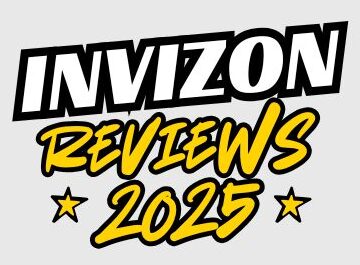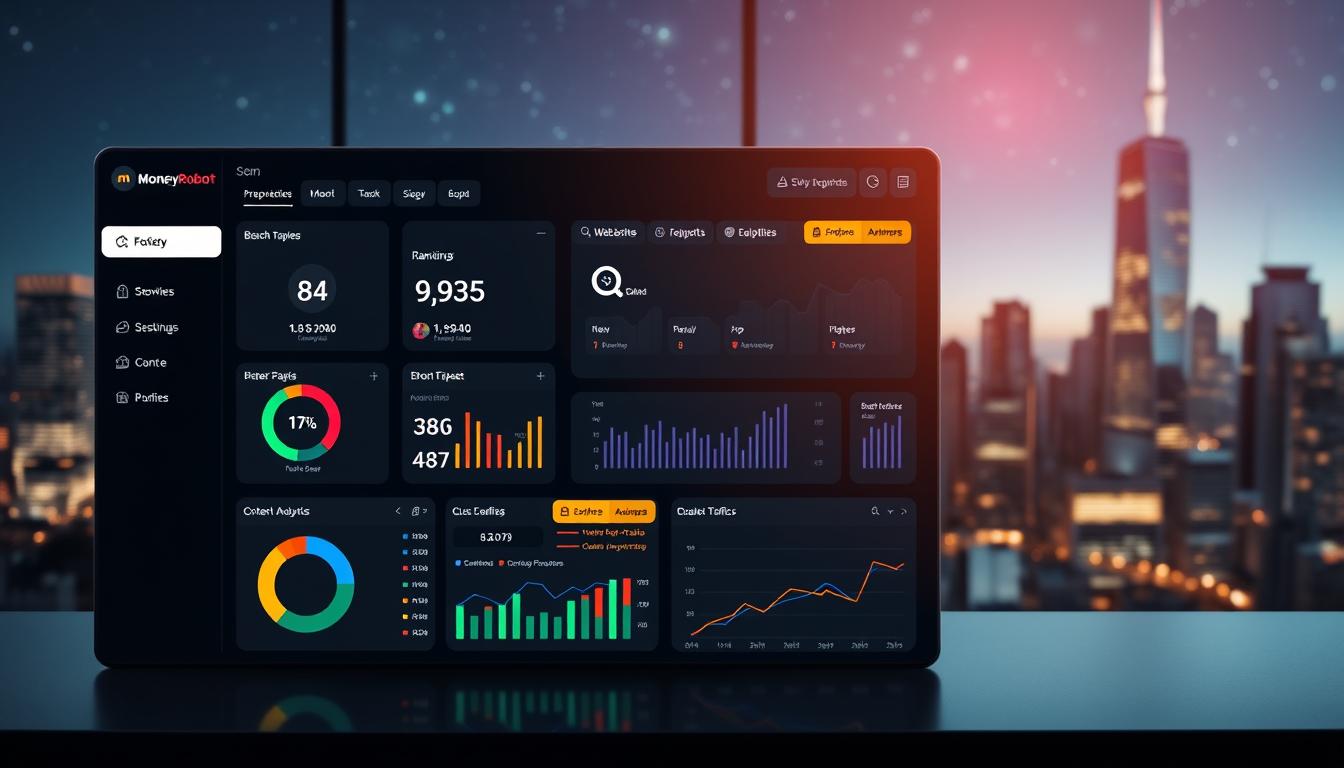Watching your savings dwindle faster than planned is a common struggle. Many people wonder what’s the best way to avoid running out of money too quickly. I’ve been there too—late-night spreadsheets, unexpected bills, and the stress of wondering where every dollar went.
This article breaks down actionable steps to extend your financial runway. From tracking expenses to building safety nets, these strategies are tested and proven.
Financial stability isn’t about earning more—it’s about making your money last. Understanding your cash flow, plugging spending leaks, and creating systems to protect your funds are key. The best way to avoid running out of money too quickly starts with awareness, not austerity.
Key Takeaways
Table of Contents
- 1 Understanding Your Current Financial Situation
- 2 Creating a Sustainable Budget That Actually Works
- 3 What Is The Best Way To Avoid Running Out Of Money Too Quickly?
- 4 Smart Spending Strategies That Preserve Your Cash
- 5 Building Multiple Income Streams for Financial Security
- 6 The Emergency Fund: Your Financial Safety Net
- 7 Tackling Debt to Stop the Financial Bleeding
- 8 Long-Term Financial Planning Beyond Monthly Budgeting
- 9 Psychological Aspects of Money Management
- 10 Conclusion: Creating Your Personal Money Longevity Plan
- 11 FAQ
- 12 FAQ
- 12.1 What is the best way to avoid running out of money too quickly?
- 12.2 How can I assess my current financial situation?
- 12.3 What budgeting method is most effective?
- 12.4 How much should I have in my emergency fund?
- 12.5 What strategies are effective for tackling debt?
- 12.6 How can I diversify my income streams?
- 12.7 Why is psychological understanding important in money management?
- 12.8 What strategies are effective for tackling debt?
- 12.9 How can I diversify my income streams?
- 12.10 Why is psychological understanding important in money management?
- Track income vs. expenses to identify spending patterns.
- Create a buffer fund even with small deposits.
- Use budgeting methods like 50/30/20 or zero-based planning.
- Automate savings to prioritize financial goals.
- Adjust habits gradually to build lasting discipline.
Understanding Your Current Financial Situation
To what is the best way to avoid running out of money too quickly, start by mapping your financial situation. Ignoring hidden spending traps guarantees failure. My journey began with a blunt truth: I couldn’t fix problems I didn’t see. Here’s how to gain clarity:
Assessing Your Income and Expenses
Start by listing every income source, including side jobs. Then log all expenses for 30 days. Use tools like PocketGuard or Excel to spot trends. Categorize spending into needs (rent, utilities) and wants (streaming subscriptions).
Identifying Financial Leaks
- Cancel unused memberships: I cut 7 subscriptions and saved $150/month.
- Track “tiny” costs like coffee runs—$4/day equals $1,200/year.
- Audit impulse purchases with a 3-day wait rule before buying non-essentials.
Calculating Your Personal Burn Rate
Your personal burn rate = total monthly expenses ÷ savings. A burn rate over 50% of income signals danger. Example: $3,000 income with $2,500 expenses means survival time: 1.2 months. Lower burn rate = longer financial runway.
Creating a Sustainable Budget That Actually Works
A sustainable budget isn’t about cutting back. It’s a path to financial freedom. Start by picking a method that suits your life.
The 50/30/20 Budgeting Method
Try the 50/30/20 split: 50% for needs (rent, groceries), 30% for wants (dining out, hobbies), and 20% for savings/debt. This balance stops overspending and builds stability.
Zero-Based Budgeting for Maximum Control
With zero-based budgeting, every dollar has a purpose. Assign each dollar to bills, savings, or goals. This method makes sure no cash is wasted.
Digital Tools and Apps That Make Budgeting Easier
Apps like Mint, YNAB, and EveryDollar make tracking easy. I use YNAB for goal alignment and Mint for alerts. Both are free to start.
How I Transformed My Finances Through Consistent Budgeting
Three years ago, I often ran out of money. Zero-based budgeting cut my credit card debt by 70%. Adding the 50/30/20 method boosted savings by 40%. It’s the consistent effort, not perfection, that matters.
What Is The Best Way To Avoid Running Out Of Money Too Quickly?
Managing your finances isn’t just about one solution. It’s about balancing spending and increasing your income. To avoid running out of money, you need two main things: financial defense and offense. Defense is about keeping your money safe through careful budgeting. Offense is about making more money.
“Wealth grows when you stop leaks and open new revenue doors.”
- Defense strategies: Use apps like Mint or YNAB to track every dollar. Cut subscriptions you don’t use and automate savings.
- Offense strategies: Start a side gig, invest in stocks via apps like Robinhood, or negotiate raises at work.
My own journey showed me that ignoring one side leads to trouble. Cutting costs alone gives short-term gains but limits growth. Focusing only on making more money can lead to overspending. But combining both creates lasting stability. The next sections will give you steps to follow for each pillar.
Smart Spending Strategies That Preserve Your Cash

Smart spending isn’t about cutting back—it’s about being smart. These tips have helped me avoid running out of money too quickly and stay on track. Let’s explore how to make every dollar count.
Distinguishing Between Needs and Wants
Begin by sorting your expenses:
- Needs: Rent, utilities, groceries
- Wants: Dining out, subscriptions, gadgets
| Category | Need | Want |
|---|---|---|
| Groceries | Store-brand cereal | Premium snack boxes |
| Entertainment | Free parks | Streaming services |
Implementing the 24-Hour Rule
Before spending over $50, I wait 24 hours. This pause helps avoid impulse buys. For example, a $300 gadget seemed urgent at 2 AM. But after a day, I realized it wasn’t necessary. “Wait, then decide—your future self will thank you.”
Leveraging Cashback and Rewards Programs
Apps like Rakuten and Ibotta offer cashback on everyday items. I’ve earned hundreds by shopping through these apps. Plus, credit card rewards for gas and groceries add up too.
Negotiating Bills and Subscriptions
“I reduced my cable bill by 30% by asking, ‘What’s your best offer to keep me as a customer?’”
Here’s what I do:
- Call providers and mention competitors’ rates
- Ask for discounts for being a loyal customer
- Cancel any unused subscriptions (like unused streaming services)
Small changes can make a big difference. These smart spending strategies turn everyday purchases into smart choices without sacrificing quality of life.
Building Multiple Income Streams for Financial Security
What’s the secret to not running out of money too fast? It’s all about earning in different ways. Having multiple income streams helps when money is tight. I learned that even small extra jobs, like weekend gigs or renting out a room, can make a big difference over time.
- Active streams: Freelancing, gig economy jobs (e.g., driving for DoorDash), or seasonal gigs.
- Passive streams: Rental income, dividend stocks, or automated affiliate programs.
- Skill-based streams: Sell online courses via Teachable or create digital products on Etsy.
- Asset-based streams: License a patent, monetize a YouTube channel, or flip second-hand items.
Begin with a small goal. I started with $500 for eBay reselling. In six months, it covered 20% of my monthly costs. Use apps like PocketGuard or Mint to track how new income helps with expenses.
“Passive income isn’t passive until you build it actively.”
Financial security grows when different streams work together. Invest 10-15% of new income in growing your streams. For example, blog profits can fund a podcast, boosting your reach. Even small gains, like $200 a month from a rental, add to your financial safety net.
The Emergency Fund: Your Financial Safety Net
An emergency fund is your first line of defense against avoid running out of money too quickly in tough times. It acts as a financial safety net against job loss, medical bills, or car repairs. Here’s how to create one that suits your needs.
How Much Should You Have in Your Emergency Fund?
Begin with a small but smart goal. I started with a $1,000 “mini-fund” for small emergencies. Aim for 3-6 months of living expenses, adjusting based on your situation. For example, self-employed people or big families might need more.
Where to Keep Your Emergency Savings
Pick accounts that are safe and easy to get to. Stay away from risky investments. This fund is for quick access, not for making money.
| Account Type | Pros | Cons | Best For |
|---|---|---|---|
| High-Yield Savings Account | FDIC insured, easy access | Lower interest than CDs | Most households |
| Money Market Account | Higher yields, check-writing access | Monthly transaction limits | Regular savers |
| Online-Only Banks | Higher APYs than brick-and-mortar | No physical branches | Digitally savvy savers |
Strategies for Building Your Fund Without Feeling Deprived
- Automate transfers from each paycheck—$25 weekly adds up fast.
- Route tax refunds, bonuses, or side hustle income directly into the fund.
- Use “micro-savings” apps that round up purchases and deposit the difference.
My big moment came when I linked savings to life events: birthdays, raises, or project completions. Taking small steps helps avoid the stress of avoid running out of money too quickly. It turns uncertainty into a sense of security.
Tackling Debt to Stop the Financial Bleeding
High-interest debt is like a slow financial bleeding, taking money away and stopping progress. My experience shows that tackling debt is key to not running out of money too fast. The debt snowball and avalanche methods are good, but you need to choose what works best for you.
- Snowball Method: Start with the smallest balances to build momentum. It’s great if it boosts your motivation.
- Avalanche Method: Focus on the highest-interest debts first to save a lot on interest.
Refinancing can cut down on interest costs. Use tools like Debt Payoff Planner on NFCC’s site to plan your repayment. But, be careful not to spend more if you consolidate without a budget.
“Strategic debt elimination is the fastest way to extend your financial runway.”
Directly negotiating with creditors can save 20–35% on interest. Set up automatic payments for the minimum, and put extra money towards your top debts. Also, save some money for emergencies before focusing on debt.
Long-Term Financial Planning Beyond Monthly Budgeting
Long-term financial planning is more than just surviving month to month. It’s about building a secure future. By making choices that align with long-term goals, you avoid running out of money too quickly. Here’s how to create systems that last for years, not just weeks.

Setting SMART Financial Goals
SMART financial goals give your planning a clear direction. Follow this simple framework:
- Specific: “Save $100k for a down payment by age 35”
- Measurable: Track monthly contributions via spreadsheets
- Attainable: Adjust timelines if income fluctuates
- Relevant: Align with life priorities like homeownership
- Time-bound: Set quarterly progress reviews
Investment Strategies for Wealth Building
| Strategy | Risk Level | Time Horizon | Example |
|---|---|---|---|
| Index Funds | Moderate | 10+ years | S&P 500 ETFs |
| Real Estate | High | 5-20 years | REITs or rental properties |
| Diversification reduces risk over time | |||
Planning for Major Life Expenses
Major expenses need their own accounts:
- Education funds: 529 plans with tax-free growth
- Home purchases: Set separate “down payment” sub-accounts
- Family care: Health savings accounts (HSAs) for future medical costs
Retirement Planning Essentials
Start saving for retirement now, even with small amounts. My top strategies:
“Compound interest is the eighth wonder of the world.” – Albert Einstein
Use:
- Employer 401(k) matching as free growth
- Roth IRA for tax-free withdrawals
- Annual contribution increases with raises
By combining these strategies, you turn short-term discipline into lifelong stability. SMART financial goals and consistent investments make your money work for you. Long-term planning is about designing a future where financial security is routine.
Psychological Aspects of Money Management
Understanding the psychological aspects of money habits is key to managing finances well. To avoid spending too much, it’s important to know how emotions and biases affect our choices.
- Present bias: Focusing on what we want now, not what’s good for later.
- Lifestyle inflation: Spending more as we earn more, which hurts our savings.
Money scripts, or deep beliefs formed early, guide our actions without us realizing it. For instance, hearing “save every penny” might make you very frugal or afraid to invest. Writing down these scripts can help change negative beliefs. Social pressures also influence us, like when friends’ spending habits make us buy things on impulse. Practicing mindfulness, like taking a moment before buying something non-essential, cut my impulse spending by 40% in six months.
| Bias | Impact | Solution |
|---|---|---|
| Present bias | Depletes savings | Automate savings first |
| Lifestyle inflation | Destroys budgets | Set fixed income percentages |
| Loss aversion | Over-spending to “avoid missing out” | Track spending visually |
“Financial discipline begins where emotional triggers end.”
Effective strategies include:
- Replacing “I deserve this” with “Will this matter in six months?”
- Discussing financial priorities openly with family to align spending habits
- Using apps like Mint to visualize spending patterns objectively
By tackling these psychological factors, managing money becomes easier. Combining knowledge of biases with practical steps helps us make better choices. This way, we can stretch our money further than we thought possible.
Conclusion: Creating Your Personal Money Longevity Plan
Building a money longevity plan means making today’s choices into habits for the future. The strategies like budgeting, cutting expenses, and paying off debt are not just quick fixes. They are tools to help you avoid running out of money too quickly.
Start with small, doable steps. Begin by tracking your spending for a week to find where you can save. Use apps like Mint or YNAB to make budgeting easier. These small wins will help you keep going.
It’s important to keep adding to your plan. After setting aside $1,000 for emergencies, focus on paying off high-interest debt. Then, start saving for retirement or take on a side job. Remember, it’s okay to face setbacks. Just don’t give up on your plan.
Even small changes, like saving $10 a week, can make a big difference over time. Regularly check in on your finances. Do this monthly to adjust your budget and quarterly to review your long-term goals.
Financial stability is a journey, not a one-time achievement. Start with what you can handle today. The money longevity plan you create will help you stay on track, even when life gets busy. Just take it one step at a time, and you’ll see how your disciplined choices lead to lasting financial stability.
FAQ
What is the best way to avoid running out of money too quickly?
To avoid running out of money too quickly, use smart financial strategies. Start with a budget that works for you. Also, save for emergencies and look for extra income sources.
By keeping your spending in check and earning more, you can stretch your money further. This approach helps you avoid running low on funds.
How can I assess my current financial situation?
Begin by tracking all your income and expenses. Use apps or spreadsheets to see where your money goes. This self-check will show you where you can save.
What budgeting method is most effective?
The best budgeting method varies by person. The 50/30/20 rule is a good start. It splits your income into needs, wants, and savings.
For more control, try zero-based budgeting. It assigns every dollar a purpose. Choose what fits your life best.
How much should I have in my emergency fund?
Aim for
FAQ
What is the best way to avoid running out of money too quickly?
To avoid running out of money too quickly, use smart financial strategies. Start with a budget that works for you. Also, save for emergencies and look for extra income sources.
By keeping your spending in check and earning more, you can stretch your money further. This approach helps you avoid running low on funds.
How can I assess my current financial situation?
Begin by tracking all your income and expenses. Use apps or spreadsheets to see where your money goes. This self-check will show you where you can save.
What budgeting method is most effective?
The best budgeting method varies by person. The 50/30/20 rule is a good start. It splits your income into needs, wants, and savings.
For more control, try zero-based budgeting. It assigns every dollar a purpose. Choose what fits your life best.
How much should I have in my emergency fund?
Aim for $1,000 in your emergency fund first. Later, aim for 3-6 months’ living expenses. This fund protects you from sudden costs.
What strategies are effective for tackling debt?
To tackle debt, consider the debt snowball or avalanche methods. These strategies help you pay off debts faster. Refinancing can also lower your interest rates.
Remember, paying off debt and saving are both important. They help you stay financially healthy.
How can I diversify my income streams?
Diversify your income by starting a side hustle or investing. You can also make money from your skills or hobbies. Even a little extra income can make a big difference.
Why is psychological understanding important in money management?
Understanding your money habits is key. Financial decisions are often driven by emotions and biases. Recognizing these can lead to better choices.
Mindfulness can help control spending. It promotes healthier money habits.
,000 in your emergency fund first. Later, aim for 3-6 months’ living expenses. This fund protects you from sudden costs.
What strategies are effective for tackling debt?
To tackle debt, consider the debt snowball or avalanche methods. These strategies help you pay off debts faster. Refinancing can also lower your interest rates.
Remember, paying off debt and saving are both important. They help you stay financially healthy.
How can I diversify my income streams?
Diversify your income by starting a side hustle or investing. You can also make money from your skills or hobbies. Even a little extra income can make a big difference.
Why is psychological understanding important in money management?
Understanding your money habits is key. Financial decisions are often driven by emotions and biases. Recognizing these can lead to better choices.
Mindfulness can help control spending. It promotes healthier money habits.



